Potrebujeme váš súhlas na využitie jednotlivých dát, aby sa vám okrem iného mohli ukazovať informácie týkajúce sa vašich záujmov. Súhlas udelíte kliknutím na tlačidlo „OK“.
ASTM B825-13
Standard Test Method for Coulometric Reduction of Surface Films on Metallic Test Samples (Withdrawn 2018)
Automaticky preložený názov:
Štandardná skúšobná metóda pre coulometricky zníženie povrchových vrstiev na kovovom skúšobných vzoriek
NORMA vydaná dňa 1.8.2013
Informácie o norme:
Označenie normy: ASTM B825-13
Poznámka: NEPLATNÁ
Dátum vydania normy: 1.8.2013
Kód tovaru: NS-8293
Počet strán: 8
Približná hmotnosť: 24 g (0.05 libier)
Krajina: Americká technická norma
Kategória: Technické normy ASTM
Kategórie - podobné normy:
Anotácia textu normy ASTM B825-13 :
Keywords:
atmospheric corrosion, atmospheric test evaluation, cathodic reduction, control coupon evaluation, corrosion film analysis, environmental testing, monitoring environmental tests, ICS Number Code 25.220.01 (Surface treatment and coating in general)
Doplňujúce informácie
| Significance and Use | ||||||||||
|
4.1 The present trend in environmental testing of materials with electrically conductive surfaces is to produce, under accelerated laboratory conditions, corrosion and film-forming reactions that are similar to those that cause failures in service environments. In many of these procedures the parts under test are exposed for days or weeks to controlled quantities of both water vapor and pollutant gases, which may be present in extremely dilute concentrations. 4.2 Many of these environmental test
methods require monitoring of the conditions within the chamber
during the test in order to confirm that the intended
environmentally related reactions are actually taking place. The
most common type of monitor consists of copper, silver, or other
thin metallic coupons of a few square centimeters that are placed
within the test chamber and that react with the corrosive
environment in much the same way as the significant surfaces of the
parts under test.
4.3 In practice, a minimum number of control coupons are placed in each specified location (see Test Method B810) within the chamber for a specified exposure time, depending upon the severity of the test environment. At the end of this time interval, the metal samples are removed and analyzed by the coulometric reduction procedure. 4.4 Other corrosion film evaluation techniques for metallic coupons are also available. The most common of these is mass gain, which is nondestructive to the surface films, but is limited to the determination of the total amount of additional mass acquired by the metal as a result of the environmental attack. The most common is weighing using high performance microbalances or for purposes of real-time monitoring, quartz crystal microbalances (see Specification B808). 4.5 With the coulometric technique,
it is possible to resolve the complex total film into a number of
individual components (4.6 The coulometric reduction
procedure can also be used in test development and in the
evaluation of test samples that have been exposed at industrial or
other application environments (7). However, for outdoor exposures,
some constraints may have to be put on the amount and type of
corrosion products allowed, particularly those involving moisture
condensation and the possible loss of films due to flaking (also
see 4.7 In laboratory environmental
testing, the coulometric-reduction procedure is of greatest utility
after repeated characterizations of a given corrosive environment
have been made to establish a characteristic reduction curve for
that environment. These multiple runs should come from both the use
of multiple specimens within a given test exposure as well as from
several consecutive test runs with the same test conditions.
4.8 The coulometric-reduction procedure is destructive in that the tarnish films are transformed during the electrochemical reduction process. Nondestructive evaluation methods, such as mass gain, can be carried out with the same samples that are to be tested coulometrically. However, such procedures must precede coulometric reduction. 4.9 The conditions specified in this test method are intended primarily for tarnish films whose total nominal thickness is of the order of 102 to 103 nm (103 to 104 Å). Environmentally produced films that are much thicker than 103 nm are often poorly adherent and are more likely to undergo loosening or flaking upon placement in the electrolyte solution. |
||||||||||
| 1. Scope | ||||||||||
|
1.1 This test method covers procedures and equipment for determining the relative buildup of corrosion and tarnish films (including oxides) on metal surfaces by the constant-current coulometric technique, also known as the cathodic reduction method. 1.2 This test method is designed primarily to determine the relative quantities of tarnish films on control coupons that result from gaseous environmental tests, particularly when the latter are used for testing components or systems containing electrical contacts used in customer product environments. 1.3 This test method may also be used to evaluate test samples that have been exposed to indoor industrial locations or other specific application environments. (See 1.4 This test method has been demonstrated to be applicable particularly to copper and silver test samples (see (1)).2 Other metals require further study to prove their applicability within the scope of this test method. 1.5 The values stated in SI units are the preferred units. The values provided in parentheses are for information only. 1.6 This standard does not purport to address all of the safety concerns, if any, associated with its use. It is the responsibility of the user of this standard to become familiar with all hazards including those identified in the appropriate Material Safety Data Sheet (MSDS) for this product/material as provided by the manufacturer, to establish appropriate safety and health practices, and determine the applicability of regulatory limitations prior to use. |
||||||||||
| 2. Referenced Documents | ||||||||||
|
Podobné normy:
Historická
1.11.2012
Historická
1.2.2013
Historická
1.2.2011
Historická
15.2.2011
Historická
1.6.2011
Historická
1.11.2011


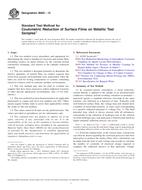
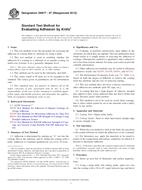 ASTM D6677-07(2012)..
ASTM D6677-07(2012)..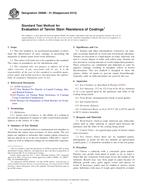 ASTM D6686-01(2013)..
ASTM D6686-01(2013)..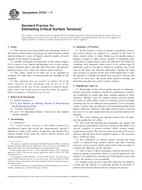 ASTM D7541-11
ASTM D7541-11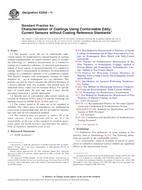 ASTM E2338-11
ASTM E2338-11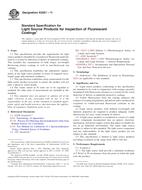 ASTM E2501-11
ASTM E2501-11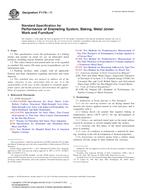 ASTM F1178-11
ASTM F1178-11
 Cookies
Cookies
